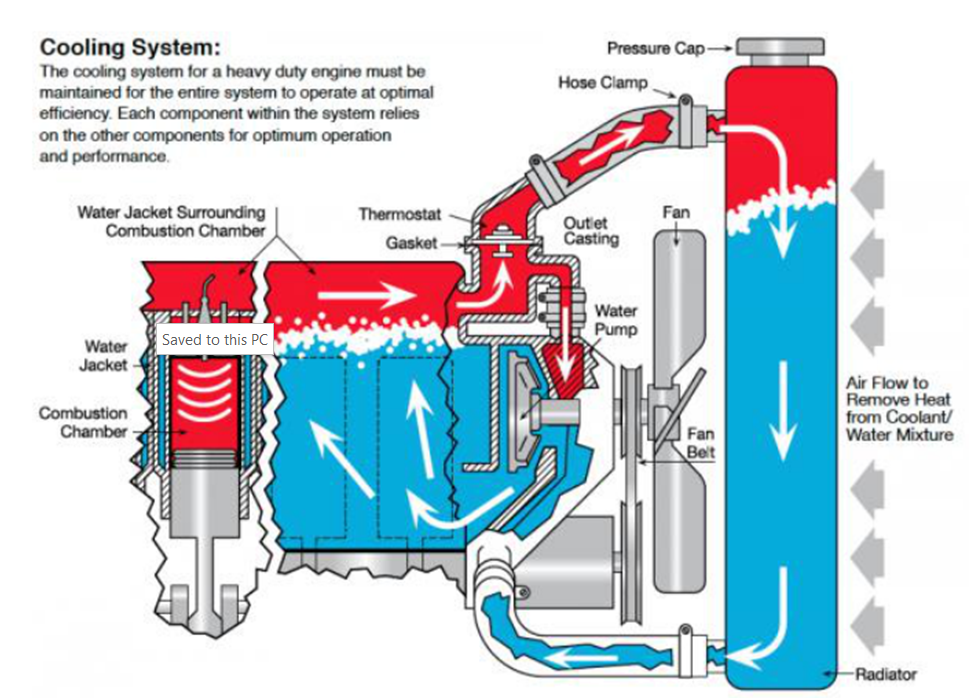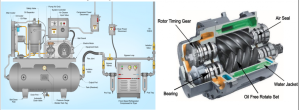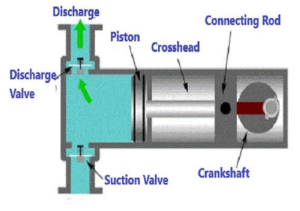There are many different formulations of coolant. Ideally one should not mix coolants due to the fact that there may be compatibility issues. Therefore, choosing the right coolant to start with is very important.
Below are five quick steps for selecting the proper coolant formulation. This approach should keep your cooling systems free of coolant cross-contamination.

- Determine what the equipment requires. The engine manufacturer and ASTM specifications can be found in the equipment manual or on the company’s website.
- See if you are on spec. Make sure your bulk fluid meets the engine manufacturer and ASTM specifications.
- Avoid mixing coolants. Using different formulations will dilute the protective inhibitors from each formula and leave the cooling system metal unprotected.
- Check the coolant during scheduled maintenance. Check for colour change, petroleum contaminants, precipitate, abnormal odors, inhibitors, glycol and pH levels.
- Perform laboratory testing. Test coolant quarterly in high-hour, heavy-duty engine applications and twice a year in all other applications.
Cooling system problems are responsible for more than 50 percent of unexpected maintenance.
Protect your engines with coolant analysis.
Coolant Analysis
The average temperature in operating diesel engines has risen as much as 40 degrees since the 1970’s, which means that today’s engines rely heavily on cooling systems to operate normally. Exhaust gas recirculation (EGR) failures and oxidized oil are two common engine issues that can be traced back to problems with coolant.
When to Check Coolants
Coolants should be field-checked during every scheduled maintenance. Field tests can be done by maintenance staff and should include color, odor, acidity/alkalinity, freeze/boil points, glycol levels, foaming, nitrite levels and molybdate levels. If a field test shows unusual results, laboratory testing is recommended. Lab testing is also recommended twice a year for normal use engines and every quarter for high-hour engines.
The following chart lists common problems with engines and coolant systems and common causes of the problems. Coolant testing can detect these problems before breakdowns occur and tests results will include recommended maintenance for the coolant and/or cooling system.
| Potential Effect | Probable Problem Area/Causes |
|---|---|
| Solder Corrosion | Glycol level and inhibitor level maintenance |
| Water Pump Seal Leak, Blocked Tubes | Glycol, SCA maintenance |
| Cooler Cores | Poor flushing after using a cleaner |
| Thermostats, Cylinder Liners | Low coolant level, reduced air flow, insufficient pressure |
| Cylinder Liners, Cylinder Block, Coolant Manifold | Exhaust gas entry |
| Water Pump, Spacer Deck | SCA level maintenance |
| Cylinder Block, Cylinder Liners, Cylinder Head | Positive stray current |
| Radiator/Cooler Cores | Poor flushing after using a cleaner, solder flux or negative stray current |

Castrol Radicool SF-O Premix
Castrol Radicool SF-O Premix, a heavy-duty, nitrite-free, extended-life antifreeze/coolant, is a premium quality, Organic Acid Technology (OAT), ethylene glycol-based fluid. Specially formulated with advanced additive technology, this product provides extended service maintenance protection in heavy duty applications without the addition of SCAs, and meets nitrite-free coolant requirements of many industry-leading OEMs.
We are the distributors of the Castrol Radicool (ELC) Premix.





